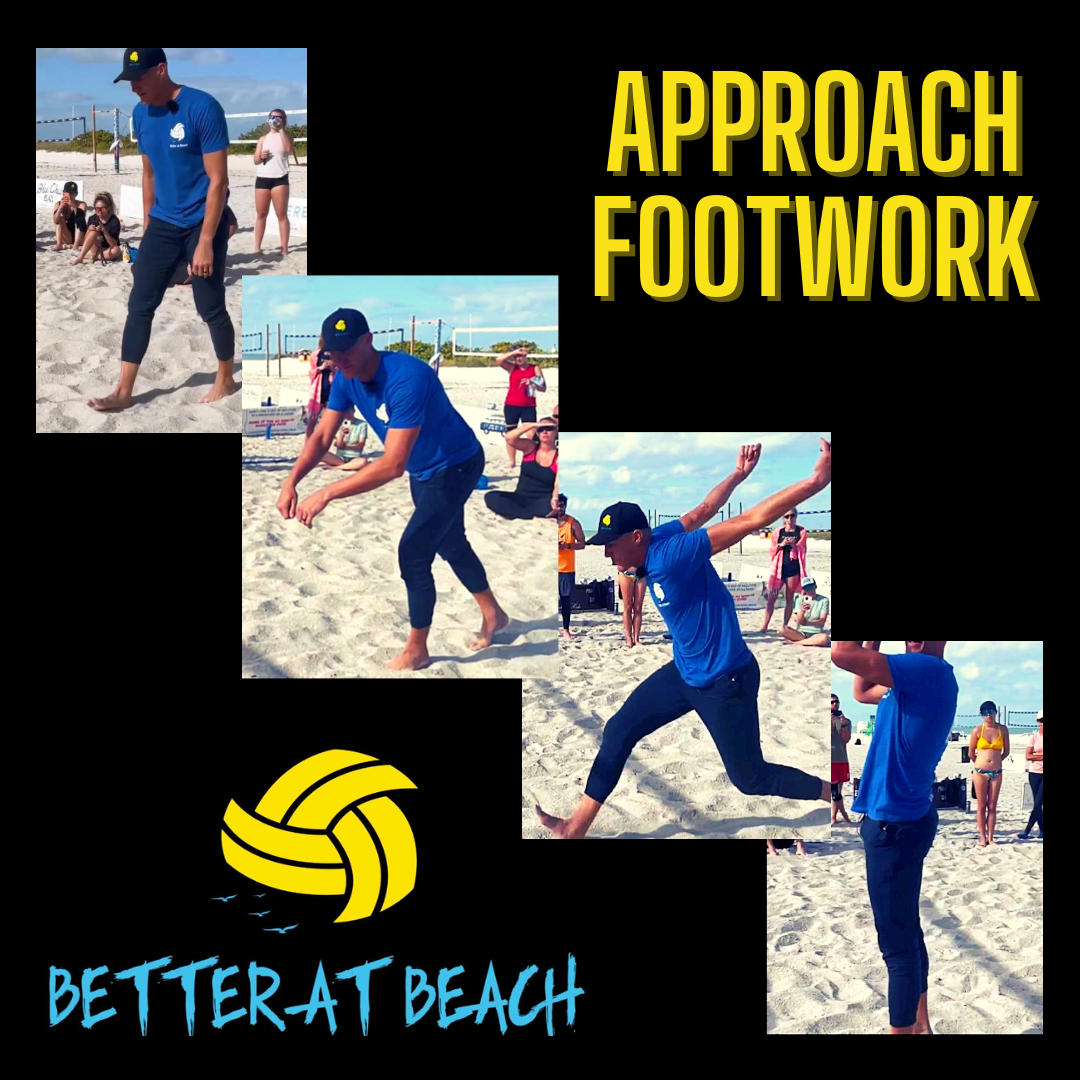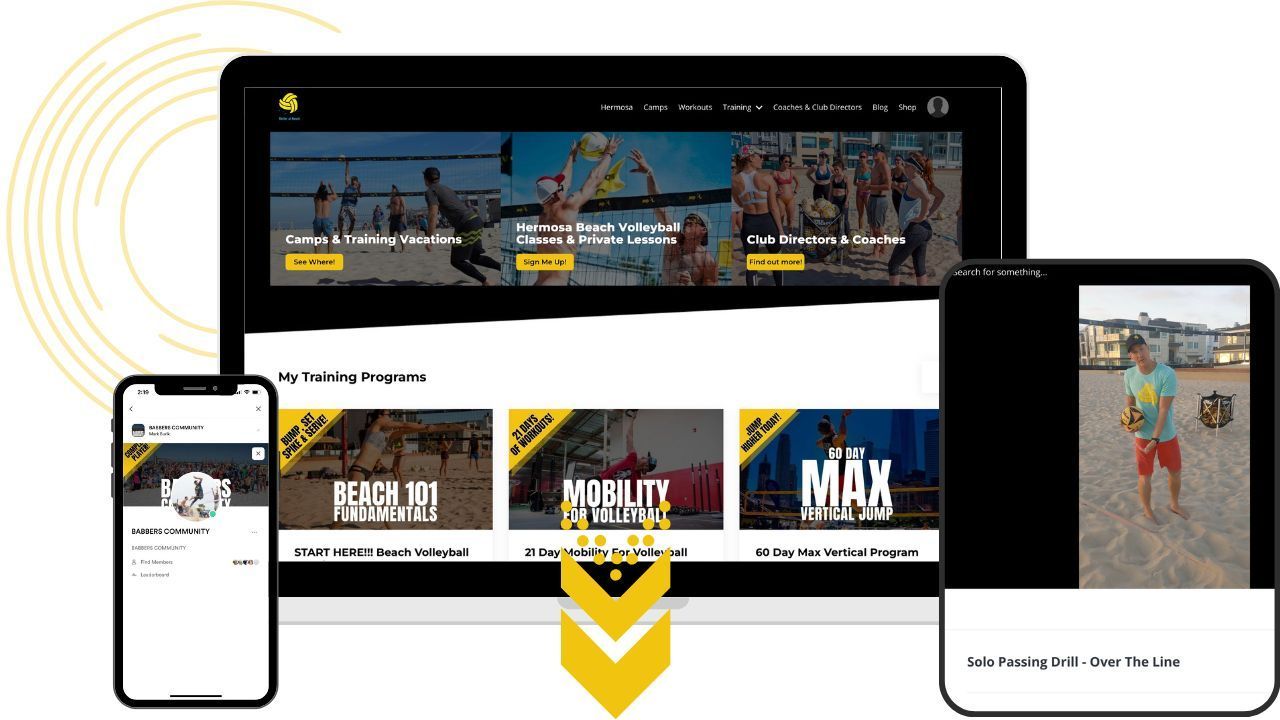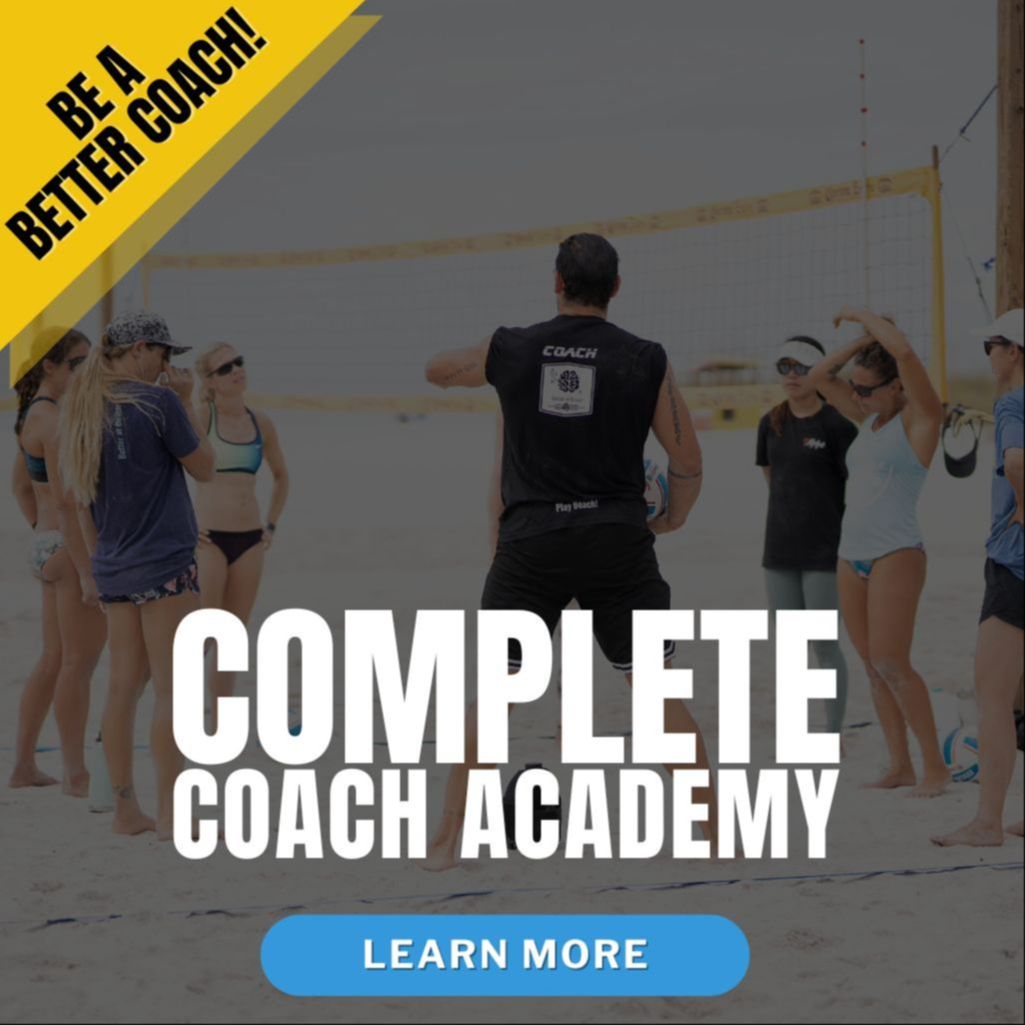
How to Hit Better in Beach Volleyball: 10x Your Attacking with These Tips
1. How to hit better in beach volleyball? Hit on your way up!
Just about every beach volleyball player wants to know how to hit a volleyball better. Most players know that you should hit the ball at the highest point of your jump but not everyone accomplishes the task. Most players will jump, feel the top of their leap, and then swing. When this happens, you are actually contacting the volleyball on your way down because you only START swinging when you feel your top. One good key I’ve been using to help myself hit better (and while coaching players in our volleyball classes in Hermosa Beach, CA) is to start swinging while you are on your way up. This mindset allows you to REALLY contact the ball at the top of your jump.
If you hit the volleyball before your peak, it’s not altogether a bad thing. Most blockers jump just after the hitter anyway so you might get it past them before their max height and max penetration which makes them smaller and easier to tool. Nick Lucena has beat some (ok... all) of my blockers by hitting a few of his shots seemingly half way into his jump. I have to introduce another key concept that will help when trying to learn how to hit better in volleyball. Positive energy that you have going into your jump will generate more power into your spike. If you contact the volleyball on your way down or after the peak of your jump, you're going to lose significant power and height. This makes hitting on your way up good for shots and power swings.
2. Make your volleyball arm swing quicker.
I’ve struggled with this for the majority of my volleyball career. I have some long arms and I open them wide, stretch my chest and arch my back while I’m in the air. We DO want a big hitting window but if your muscle activation is incorrect it will lead to a very slow arm swing. Try to keep your hitting elbow high and back rather than reaching and dipping it behind you. Stay tall and don’t let your spine become a slinky.
Personally, I think my brain recognizes that I need to swing softer for a shot so when that signal gets interpreted through my body, I end up having a long slow arm swing which becomes very readable. Make your arm swing quick and light. See how fast and loose you can move your arm to the contact zone without putting power into the volleyball and you’ll keep the defense guessing. This hitting tip alone, could have helped me a thousand times over in beach volleyball AND playing indoor volleyball with speed offenses.
3. Finish UP. No, really... UP!
This flaw runs DEEP through the ranks of beach volleyball. Your brain knows that the ball has to go DOWN. So it makes your body parts pull DOWN. I remember when I first started playing and I had no idea how to spike a volleyball, I was taught to PIKE when I hit. This just doesn’t work for volleyball players the way it's supposed to. Check out any volleyball highlight video from the FIVB World League or the FIVB Beach Volleyball World Tour and you will see majority TALL, STRAIGHT bodies during and after spike contact.
The only thing that makes a ball go down is when your hand hits on the upper half of the volleyball. Instead of pulling your arm and shoulders down when you hit, think about GETTING TALL and finishing UP. If your hand wants to fall because of the follow through, that's OK but I recommend throwing your energy UP. Two helpful keys, I’ve been taught and subsequently use when teaching the people at our beach volleyball vacations are:
Want to show your support and help us make more content?
Check out our Volleyball Favorites...
 |
 |
|---|---|
| Premium Tank Top | Molten Elite Beach Volleyball |
“Go up and try to bite the ball on contact.”
“Imagine a a diamond in the middle of your chest. Bring that diamond up and through the ball when you swing.”
Want to learn more IN PERSON and ON VACATION??
Our camps are designed to get you Better at Beach Volleyball...
4. Don’t let your fingers touch the volleyball!
Finger contact actually slows the ball down and creates ‘fluffy’ hits. The ball won’t ping off your hand and it will allow the defense one more millisecond to recognize where you are shooting. If you really want to know how to hit a volleyball better and more accurately, know this:
The fingers actually shouldn’t play a part in the attack contact.
They will finish OVER the ball or sometimes on the side but if you are letting them play a role in your contact, your shots won’t be as crisp and defenders will scoop you left and right. One of the best examples of this on the AVP Tour is Billy Allen. He has a devastating high line that FIRES off of his hand when he hits the volleyball.
5. Always approach slow to FAST.
This is another widely known concept that isn’t executed at a high level for 99% of beach volleyball players. Amateur attackers often get away with soft approaches and jumps because not that many blockers are great at seeing slow approaches and dropping to play defense late. At some point you are going to run into an athlete who can read AND play peel defense. They are going to peel on you and shrink your court as soon as they see you taking that half speed approach. The best shots come from the highest points.
If you don’t jump full out, your shots won’t fall. If the blocker peels on you late, you won’t have the speed or height to detonate on the open net. Early in my career, I would get into great shooting rhythms and then lose a point or two on a late peel. In AVP qualifiers and especially the Main Draw, that one, single point is the difference between winning and losing. Jump the same way with a quick step close every, single, time. A great guy to watch for this is John Hyden. His step-close is always quick without a long deep jump. It shouldn’t feel like you are summoning all of your muscles like a standing broad jump. Just make sure the last two steps are FAST and explosive instead of slow and strong.
Want more information on Approach Footwork in detail? Click below to read more!
DON'T STOP HERE. CHECK OUT PART 2 OF THIS SERIES
Stay tuned for our next installment of this how to hit better in beach volleyball series by following Better at Beach on Facebook and Instagram.
OR Get our Free E-Book 36 Drills for Beach Volleyball and get all the tips, advice, discounts and perks that come with being a part of our email list. Sign up below!
Author and Founder of VolleyCamp Hermosa and Better at Beach, Mark Burik has been a mainstay on the AVP Tour for the last 10 years and has represented Team USA in numerous FIVB World Tour competitions as well as the 2019 Pan Am Games. Follow him on Facebook or Instagram @MarkBurik
We also show you how to find the offense that’s best for YOU and when to use your different attacks so you can beat specific types of players. Once inside the membership, you’ll be able to unlock “Side Out and Win Tournaments: The Attacking Master Class” and “Fix Your Arm Swing in 21 Days” which will build you a new, more powerful, pain-free arm swing from the ground up. It comes complete with rehab protocol, gym exercises you need to increase arm speed, and elite throwing and hitting drills.
We also include with 8 more skill courses AND
our 60 Day At-Home Max Vertical Jump Training Program
Once you sign up, you'll be able to watch the in-depth tutorials, film your “before” videos, start and film your at-home drills and begin posting to our Private Facebook Group. Then, our coaches will break down your mechanics and spacing and timing at our weekly online meetings.
YES, that means we look at YOUR videos and we coach YOU!









